EXPERIENTIAL GALLERY
Bihar Museum
Bihar, the birthplace of ancient Hindu culture and Buddhism, is an ancient state that has a profound historical significance. It is also the home to India’s most powerful empires: the Magadha, Mauryan and Gupta.

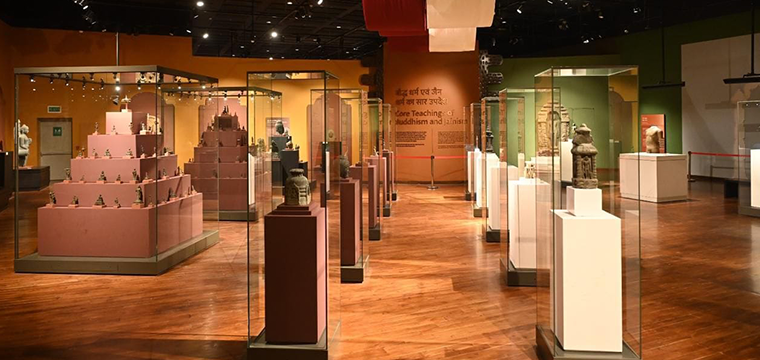
The Bihar Museum in India is a world-class institution that showcases this ancient state’s rich history and culture.
The museum houses an extensive collection of historical artifacts, artworks, and interactive exhibits, offering a vivid portrayal of India’s rich past.
History Gallery A
The earliest chapters of Indian history are presented in this gallery.
Starting with the earliest civilizations, Gallery A features prehistoric cave arts, ancient scripts, religious symbols, and the might of early warriors.
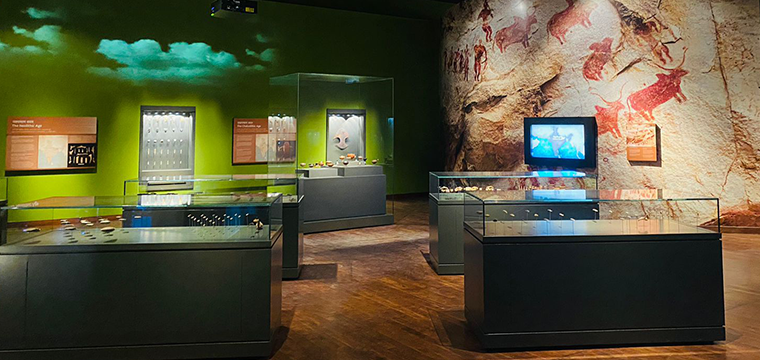
Rock or Tool?
This short film explores the remarkable evolution of tool technology that shaped human history. Early humans transformed simple stones into essential tools like knives, axes, and spearheads.
Next to the exhibit, viewers can view the very stone tools featured in the film, offering a tangible connection to the remarkable craftsmanship displayed on screen.
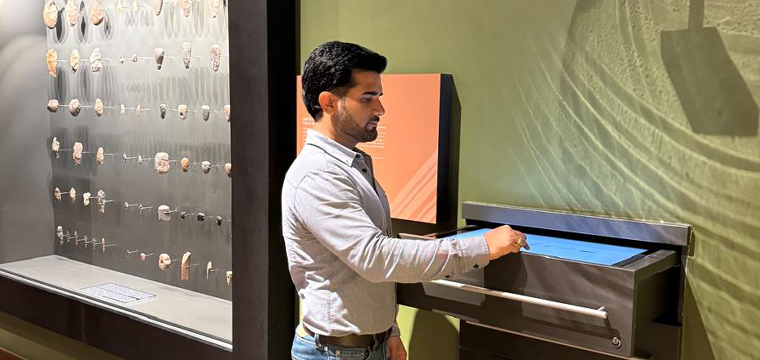
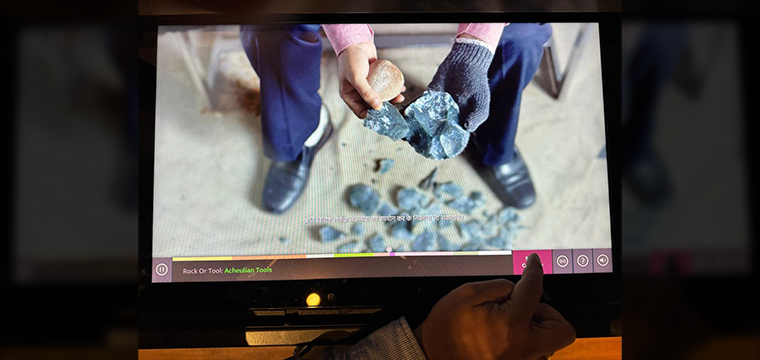
The process of crafting these tools showcases their ingenuity and resourcefulness, revealing that these artifacts were far more than just rocks—they were vital to survival and progress.
Brahmi Script
The Brahmi script is the ancient foundation for countless regional scripts used across India today.
A projection wall near the recreated entrance of the Barabar Caves showcases the evolution of the Brahmi script into modern Indian scripts.
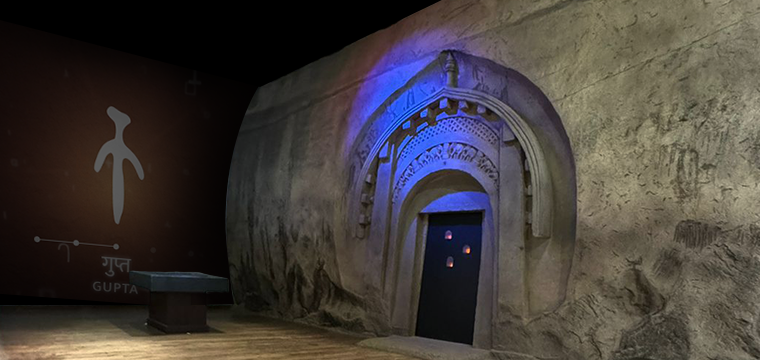
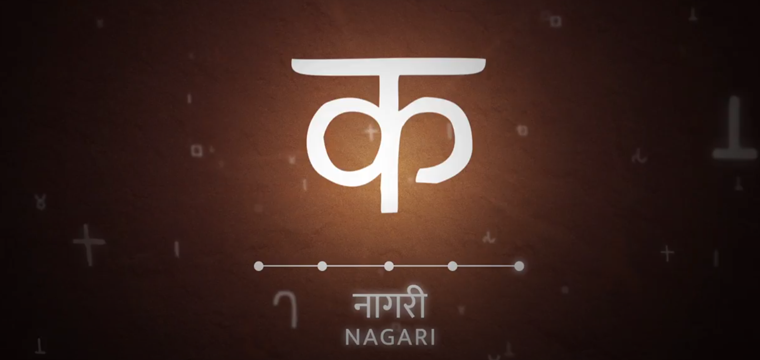
As the Brahmi characters gracefully morph into their modern counterparts on the projection wall, visitors may gain a deeper appreciation for the script’s enduring legacy by engaging with the Brahmi Writing exhibit, located next to the display.
Brahmi Writing
Visitors are invited to type their names, which are then transformed into the ancient script, revealing the shared ancestry between Brahmi and various modern languages.
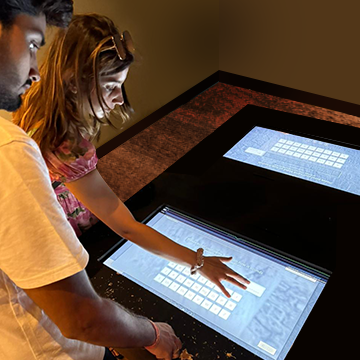
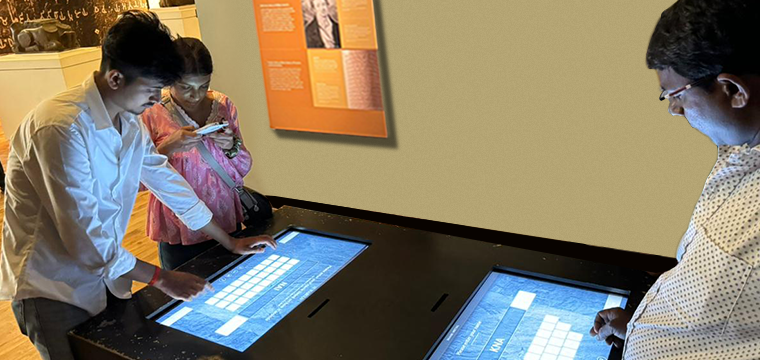
To capture this unique experience, visitors can take home a printed comparison of their name in Brahmi and its modern script.

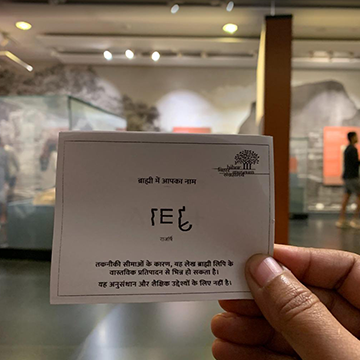
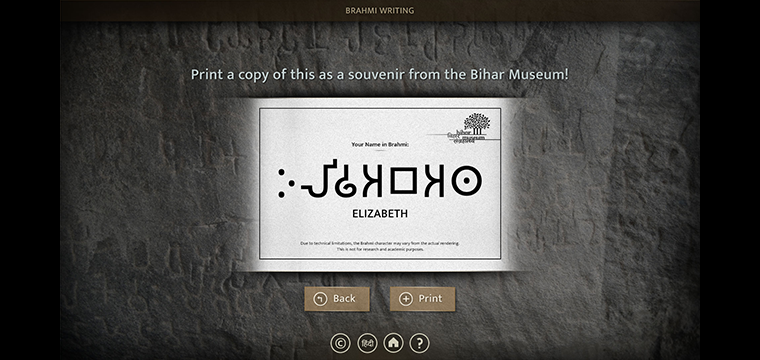
Within the same exhibit, visitors can explore the development of Indian scripts.
They will witness selected words transform through a series of characters, showcasing the key stages in the script’s evolution.
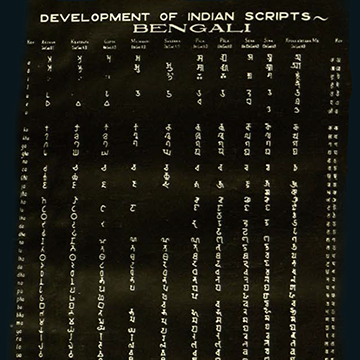
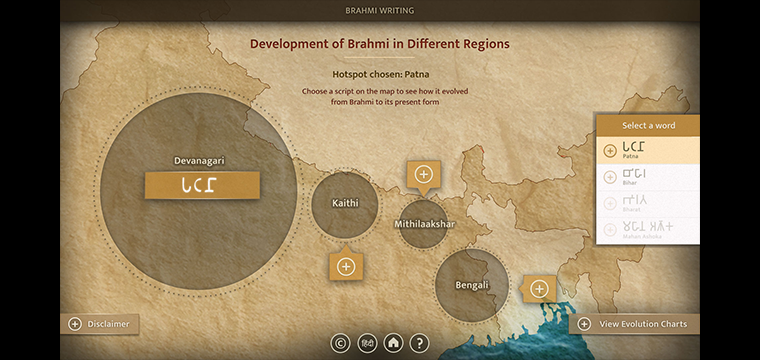
The Might of the Nandas
An animated film sequence unfolds across a full-height wall, immersing visitors in a dramatic battle scene.
Set against a rain of spears and arrows overhead, the sequence brings to life the raw power of the legendary Nanda warriors, evoking a sense of tension and awe.
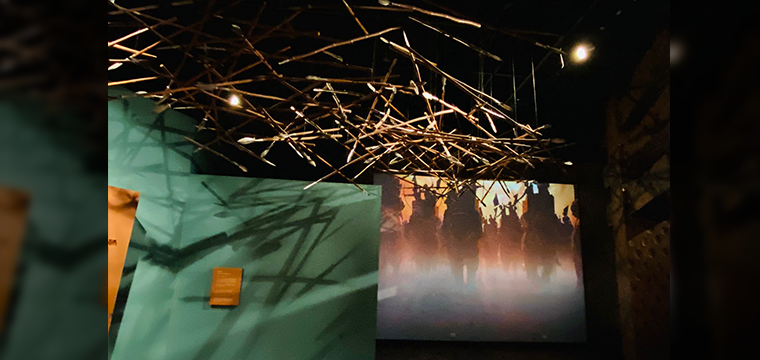
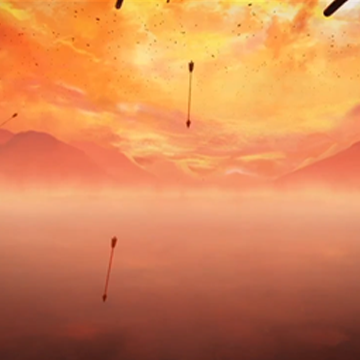
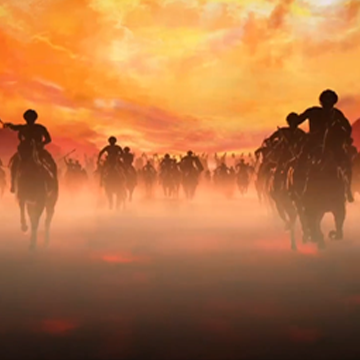

As the scene reaches its climax, warriors riding towering war elephants charge forward, symbolizing the epic battles of 4th century BCE India.
This powerful finale captures the scale and intensity of ancient warfare, leaving visitors with a deep appreciation for the might of the Nandas.
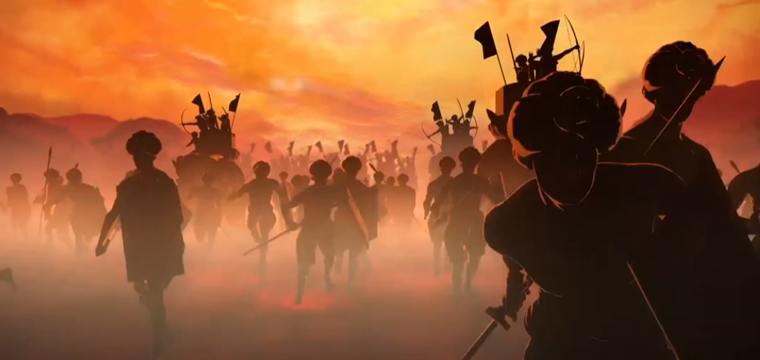

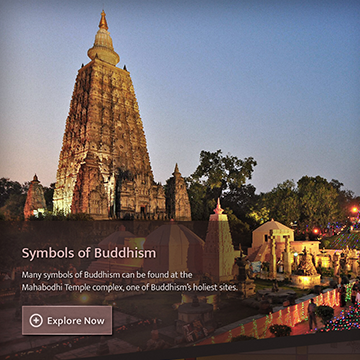
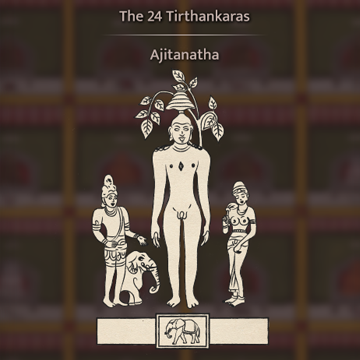
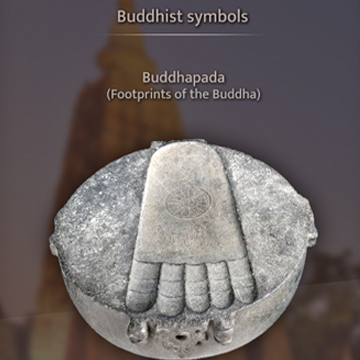
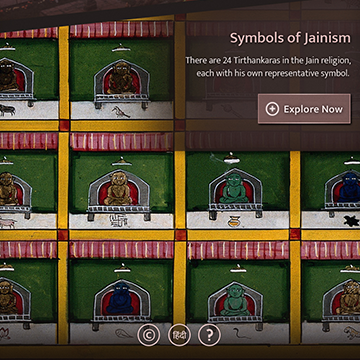
Jain and Buddhist Symbols
The rich symbolism of Jainism and Buddhism is explored through sculptures and sacred sites.
Miniature replicas of the Mahabodhi temple and stupas are provided to deepen visitors’ connection to the heart of Jain and Buddhist spirituality.
.
Visitors are introduced to symbols, often centred around the Bodhi Tree, that have shaped these ancient belief systems.
.
By selecting a symbol, a photograph showcasing its representation at the Mahabodhi Temple is enlarged, revealing the significance of these spiritual traditions.
Cracking the Indus Code
What stories do the symbols on the Indus seals whisper?
These enigmatic markings, a common feature of Indus Valley inscriptions, continue to baffle scholars.
Visitors can explore the complexities of deciphering this ancient script and discover why, unlike its counterparts, it remains an unsolved mystery.
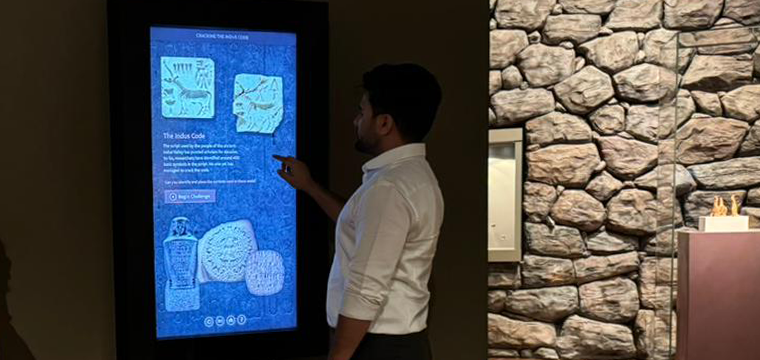
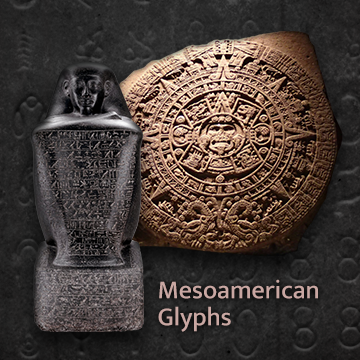
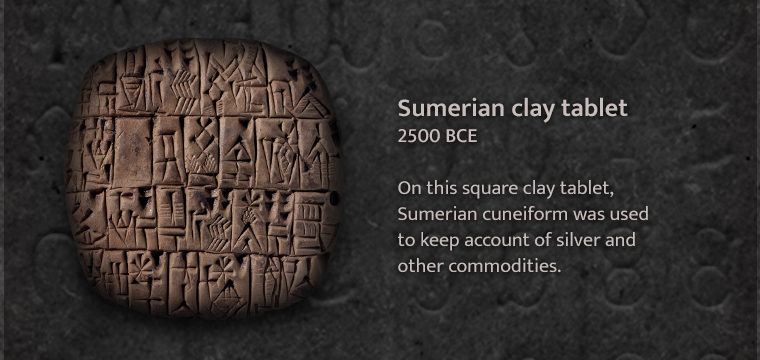
Visitors can test their skills with an interactive matching game, where they identify the correct symbols from the Indus inscriptions and drag and drop them onto the corresponding seals.
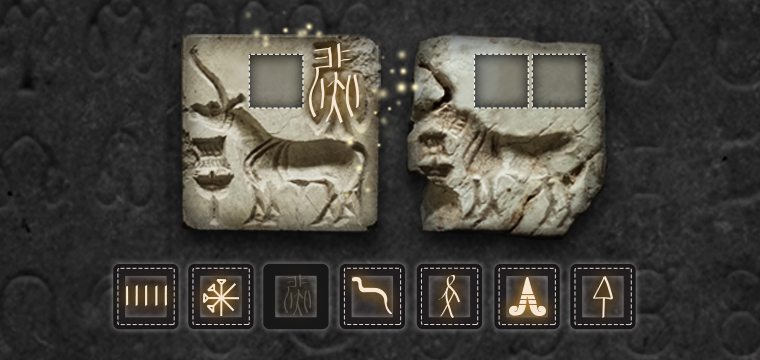
Kaimur Caves
The Kaimur caves in Bihar are rich repositories of cave art paintings dating back to prehistoric times.
These paintings offer a glimpse into the lives of early inhabitants, depicting scenes of daily life, hunting rituals, and symbolic representations.
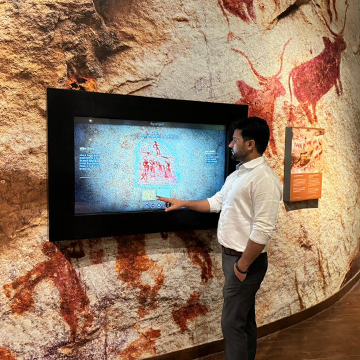
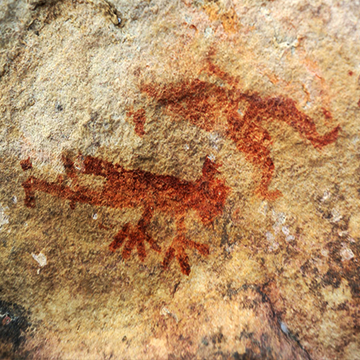
To bring these ancient images to life, the exhibit transforms rock art into subtle animated figures, enhancing the visitors’ experience.

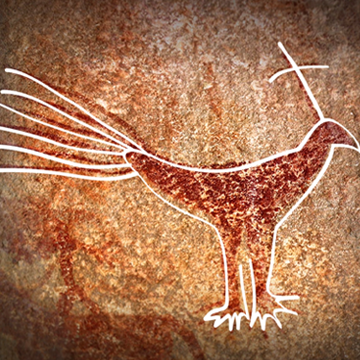
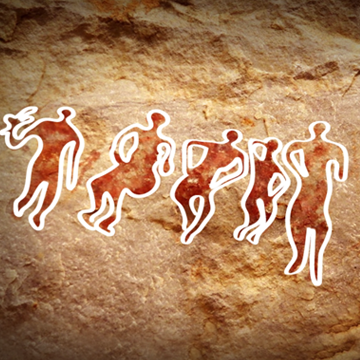
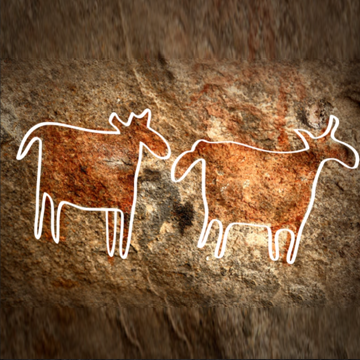
History Gallery B
Key periods of Indian history are explored in Gallery B. The artistic and cultural peak of the Gupta era is showcased through terracotta art and intricately detailed coins.
The rise of Buddhist-learning centres is exemplified through a recreated monk’s cell from Nalanda University. To complement this, a life-size recreation of a priest performing a ritual is projected onto the facade of the Mundeshwari temple.

Gupta Coin Projection
Figures and themes adorning both sides of coins issued by early Gupta rulers are brought to life through a series of animated projections displayed on the gallery walls.

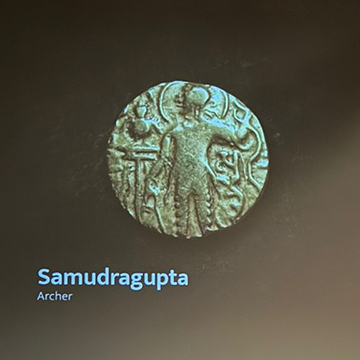

The Gupta Coins
The die-struck process, a centuries-old technique, was utilised for coin minting in India. The Gupta dynasty’s power and prosperity are reflected in the significance of these coins.
Visitors engage in an interactive 3D game where they select animals and occupations to create personalised digital coins, replicating the ancient minting process.

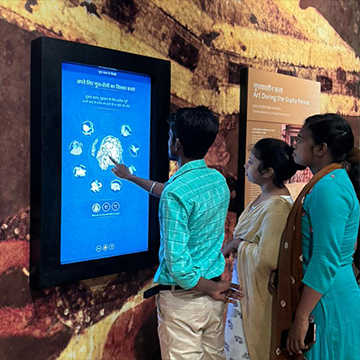
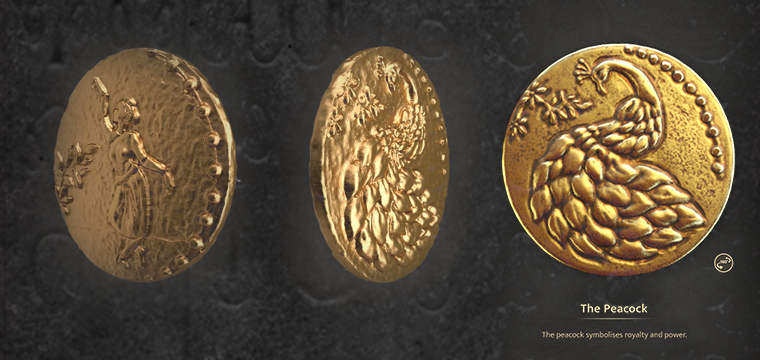
Within the same exhibit, they will be introduced to the imperial Gupta rulers and the significance of the coins issued by them, gaining insights into their symbolic meanings and historical importance.

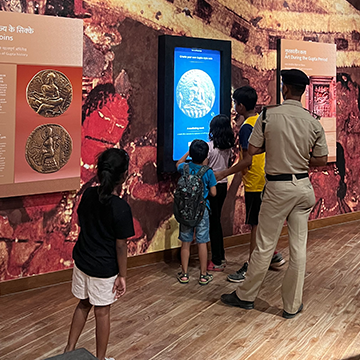
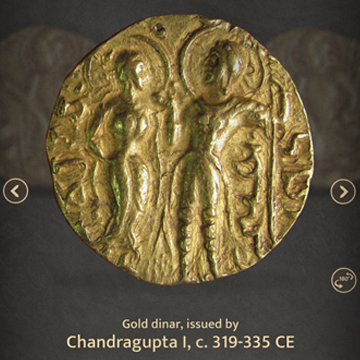
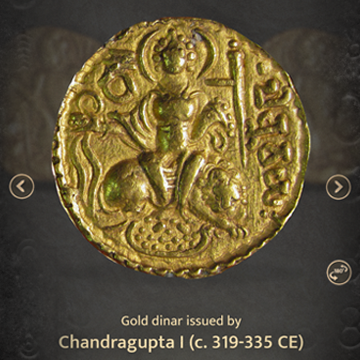


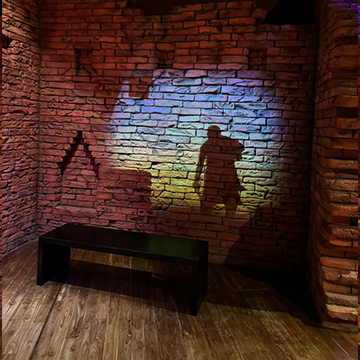
Nalanda Monk Cell
Visitors step into a reconstructed monk’s cell to experience life at Nalanda University.
Once a thriving centre of learning, the university’s vibrant past is brought to life through audio and visual displays that depict the activities that once filled these spaces.
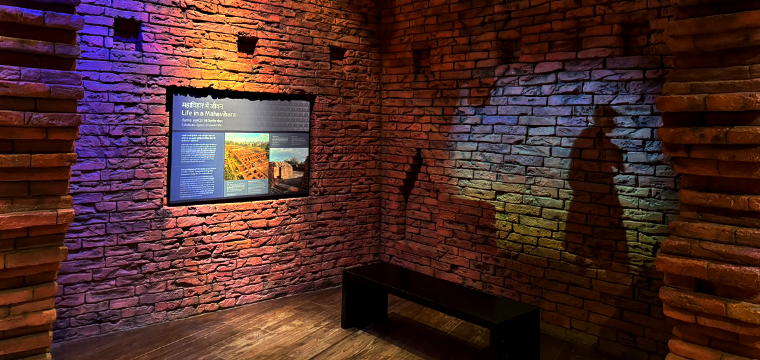
Nalanda University
Nalanda University, a renowned centre of learning from the 5th to 12th centuries, is explored through its architectural remains.
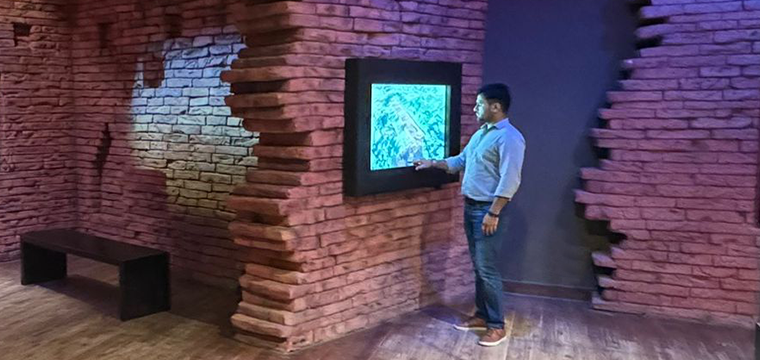
Drone footage offers a comprehensive perspective of the university’s layout, while interactive hotspots in the exhibit provide detailed information on its various structures and functions.
Visitors are also introduced to other significant Buddhist universities that flourished in Bihar during this period.
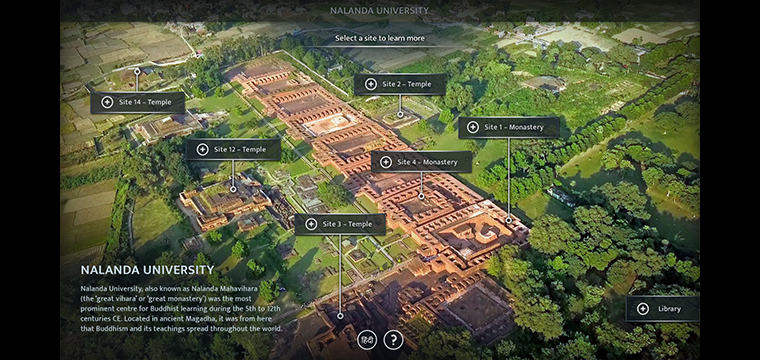

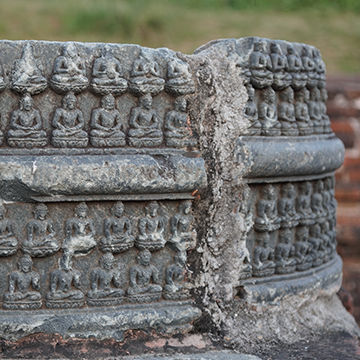
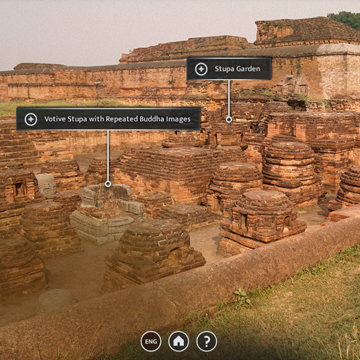
The Spread of Pala
The artistic legacy of the Pala dynasty extended far beyond its borders. The multitouch table exhibit explores how Pala art and culture spread from Bihar across Asia, influencing diverse regions.
Displayed among the Pala statues, this interactive exhibit allows visitors to engage with the art’s influence while viewing the sculptures that reflect the dynasty’s rich heritage.
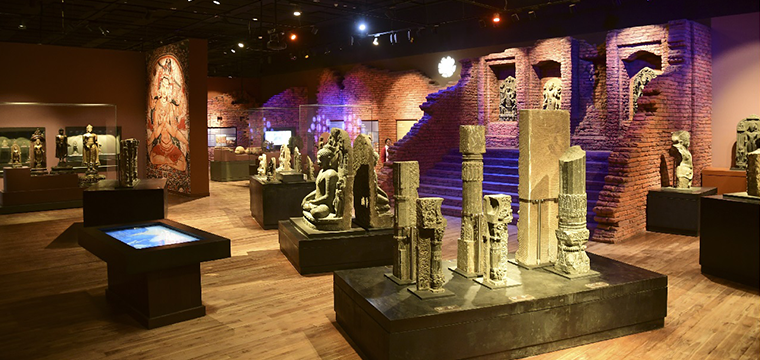
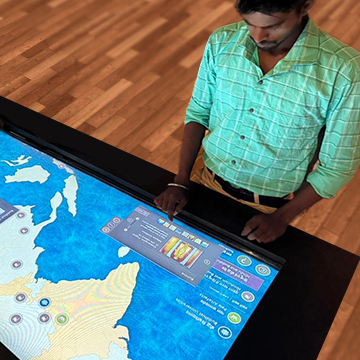

Viewers can explore the intricate details of Buddhist and Hindu iconography, and delve into the world of Vajrayana Buddhism, which thrived under Pala patronage.
Mundeshwari Temple
A mapped projection brings a priest performing a ritual to life on the temple’s façade.
This façade is a recreation of the iconic Mundeshwari Temple. One of the oldest and most protected monuments since 1915, it stands as a testament to India’s rich architectural heritage.
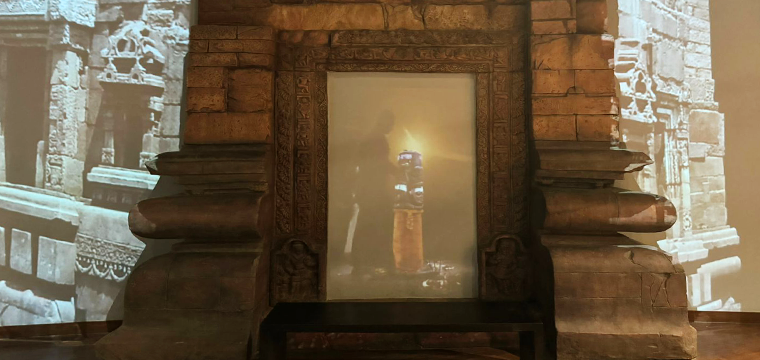


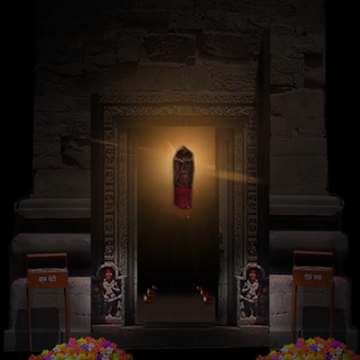
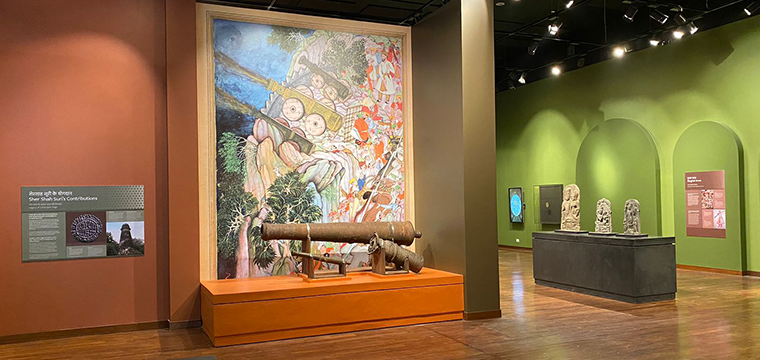
History Gallery C
Gallery C presents an exploration of Bihar’s rich history, focusing on the Sur and Mughal eras. The gallery showcases the region’s significance in shaping India’s political, cultural, and economic landscape.
Visitors are introduced to the lives of emperors and their impact on warfare, administration, and artistic expression, exemplified by the Patna School of Painting and the rise of Islamic calligraphy.
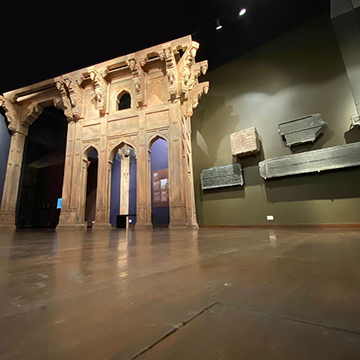
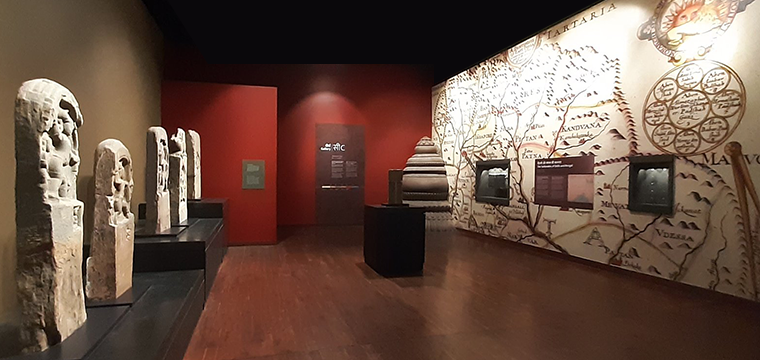
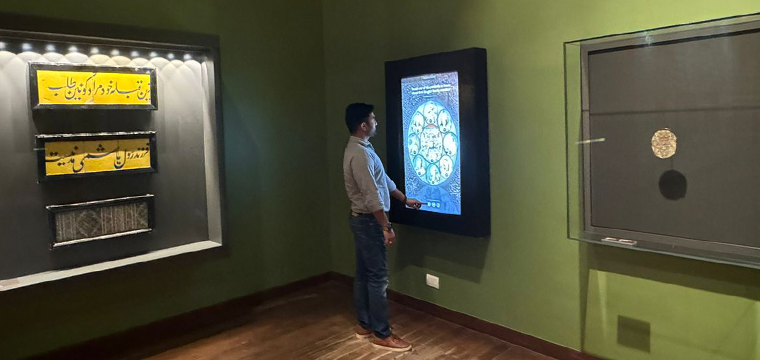
The Mughal Family
The Mughal dynasty lasted over 400 years and formed a unique pan-Indian identity.
Unravel the Mughal history under each ruler’s paintings and the contents of the majestic darbar (court).
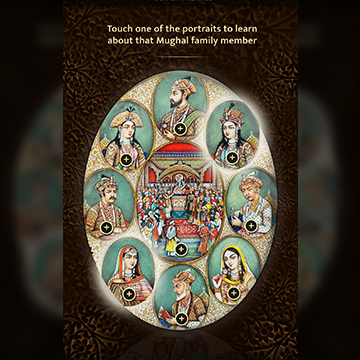
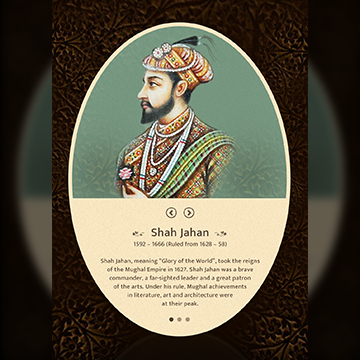
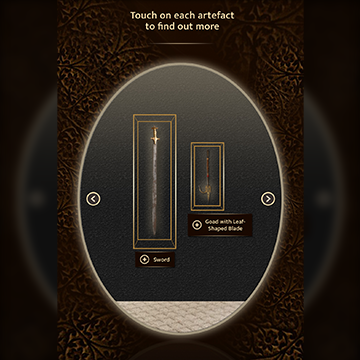

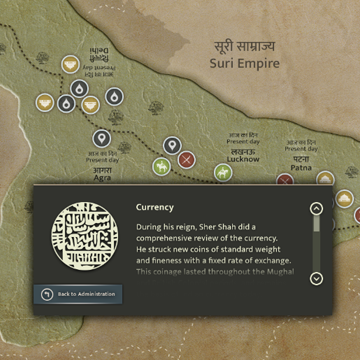
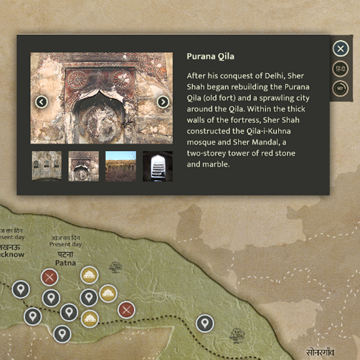
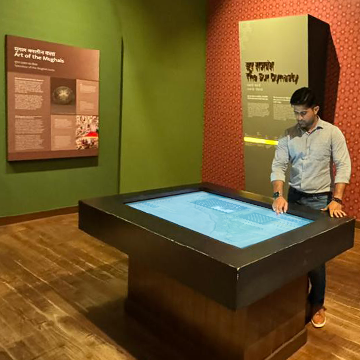
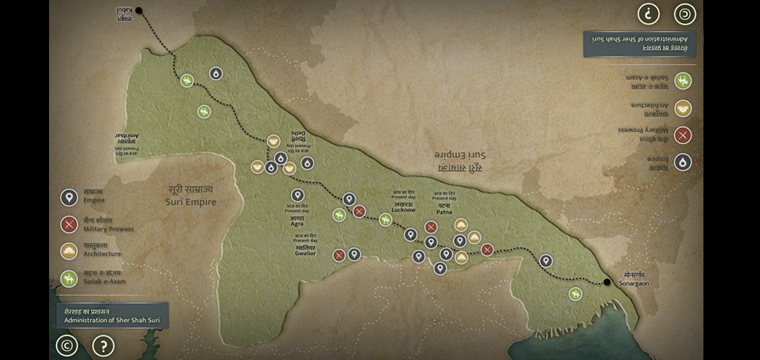
Five Years to Build a Kingdom
Despite a reign spanning only five years, Sher Shah Suri secured his place as one of India’s most capable rulers.
Displayed against a map of ancient India, visitors can explore key locations significant to Sher Shah’s rise to power, contributions, and achievements.
.
This exhibit explores the key regions and events pivotal to his rise, contributions, and enduring legacy.
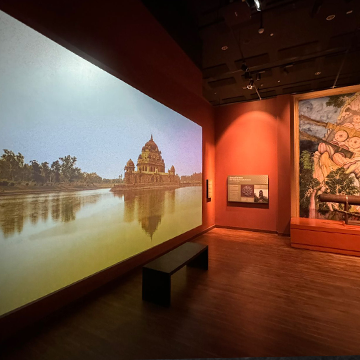
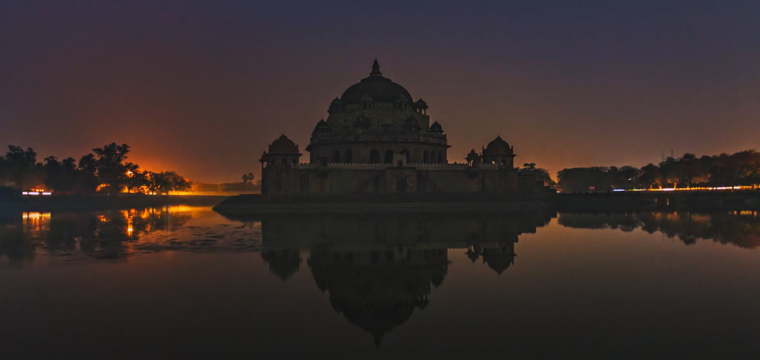
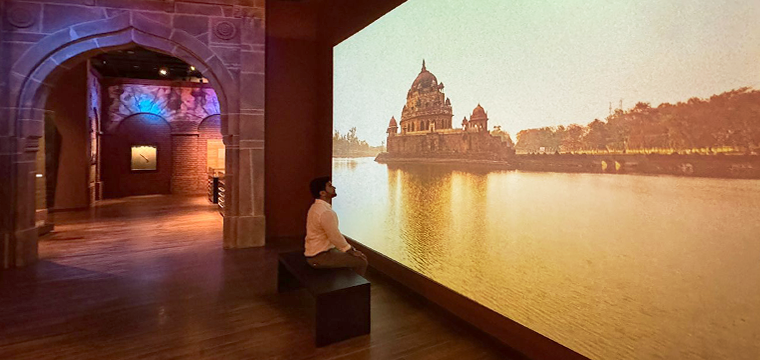
Sasaram Tomb
The majestic Sasaram Tomb of Sher Shah Suri embodies both the glory and the fleeting power of the Sur Empire.
A time-lapse video, showcasing the tomb from sunrise to sunset, evokes the empire’s short-lived reign.


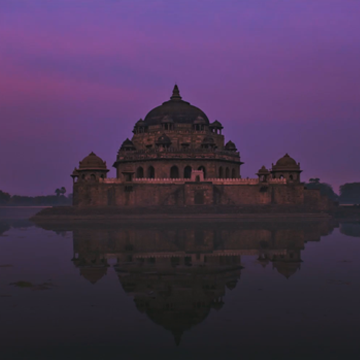

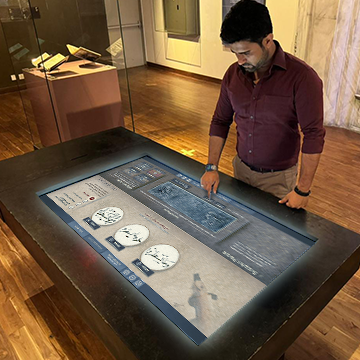
Calligraphy and Manuscript
Against the backdrop of the recreated Maner Sharif, visitors can immerse themselves in the art of Islamic calligraphy by trying their hand at three distinct styles. As a keepsake, they can take home a printed card featuring their name in their chosen calligraphy style.
One may even delve deeper by browsing through a digitised manuscript within the exhibit.

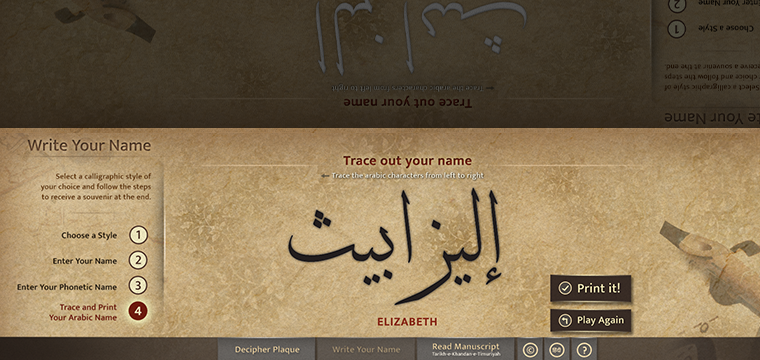
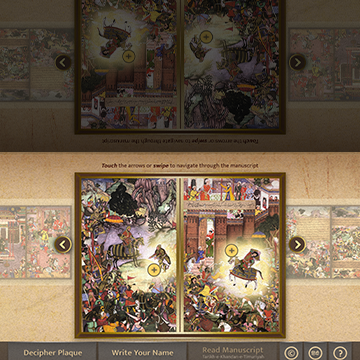
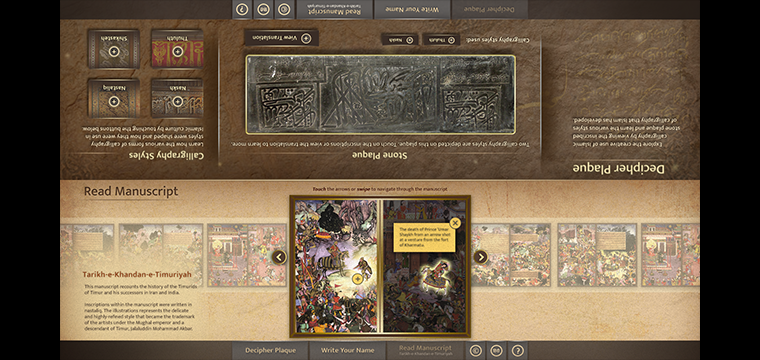
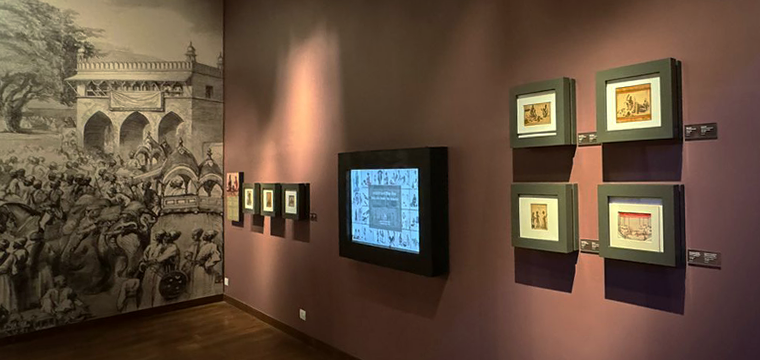
Daily Life Under the Nawabs
This exhibit, resembling a digitised photo album, explores the history and origin of the Patna School of Painting. The painters of this school uniquely captured the daily lives and professions of local Biharis, as well as the diverse animal kingdom, under the Mughal era.

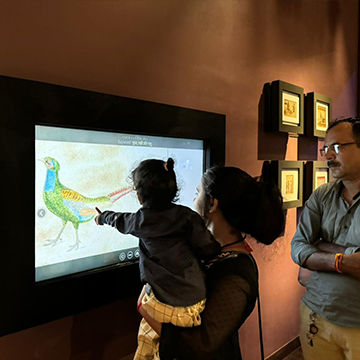
Gallery G: Bihari Diaspora
Gallery G offers a comprehensive exploration of the Bihari diaspora, beginning with the harrowing experiences of the Girmitiyas (indentured labourers) during colonial times.
The gallery chronicles the journey of the Girmitiyas, their struggles, and their enduring spirit. It further delves into the formation and evolution of Bihari communities worldwide, highlighting their cultural contributions and global impact
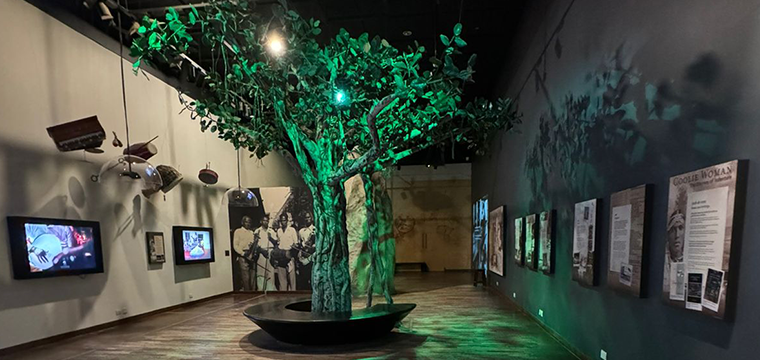
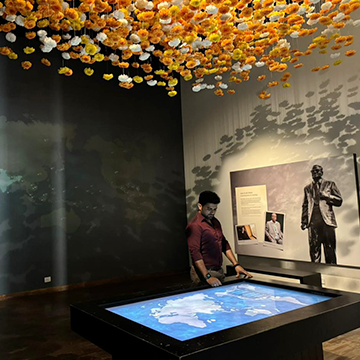
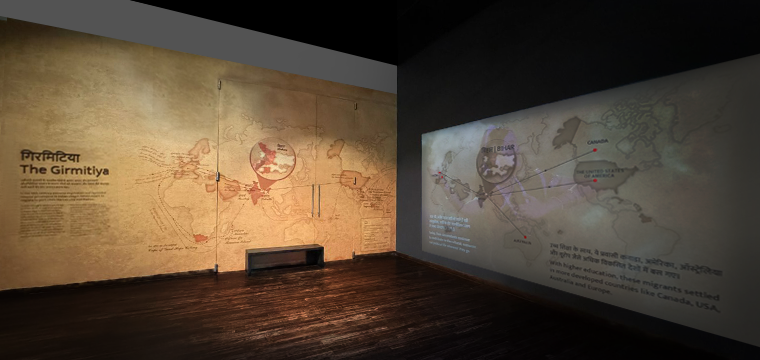
Clouds on the Ashokan Pillar
Holographic storm clouds churned across a recreated Ashokan Pillar, foreshadowing the journeys ahead for the Bihari diaspora.
These churning clouds mirrored the challenges and uncertainties faced by those leaving their homeland.
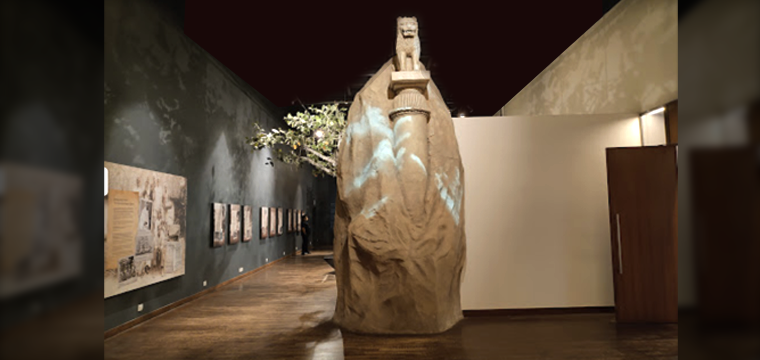
History of the Bihari Migration
The 19th and 20th centuries in Bihar were marked by a large-scale exodus. Men, women, and children left their homes for unknown foreign lands under the colonial indenture systems.
Visitors embark on a visual journey through this period, encountering archival black and white photos, footages, and digitised documents.
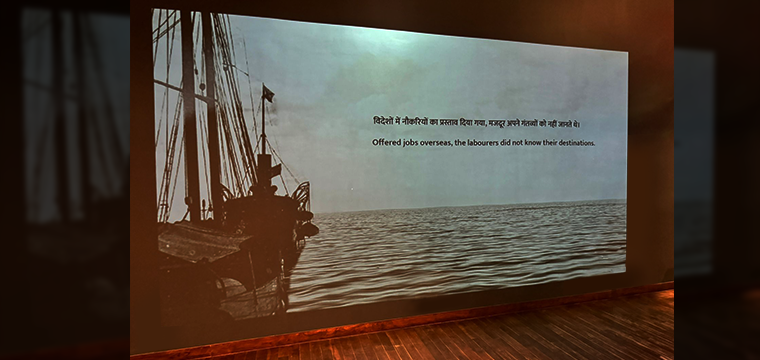


Archival Photos of Bihari People
Many people migrated from Bihar during the 19th and 20th centuries due to British rule.
A large-scale wall projection brings these stories to life, showcasing the journeys of individuals who left their homes for uncertain futures abroad.
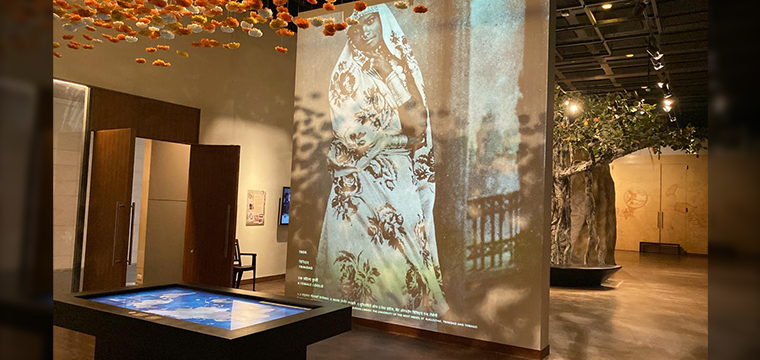
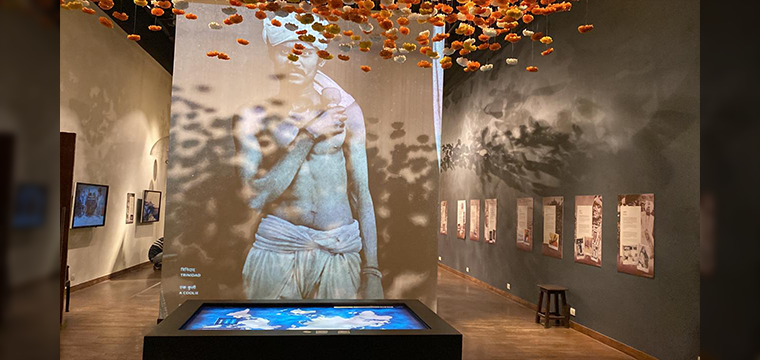
Music of the Diaspora
Bihari folk music culture stretches from the roots of rural Bihar into distant regions such as the Caribbean, and North America.
Musical instruments are suspended in a display above the exhibits, symbolizing the far-reaching influence of Bihari music across the world.
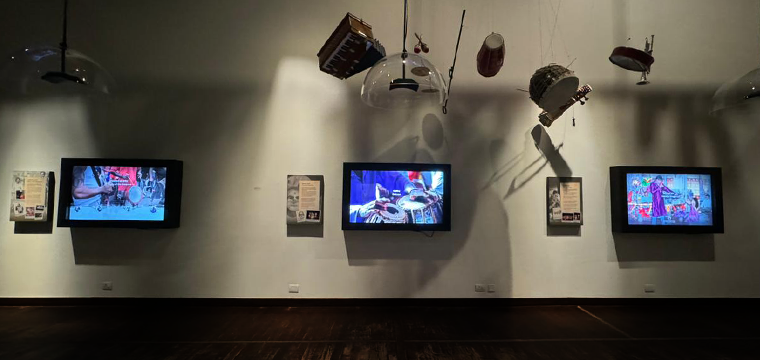

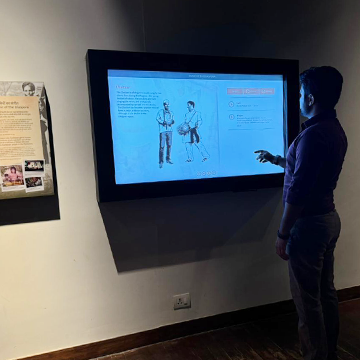
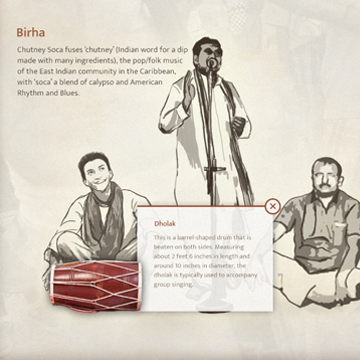

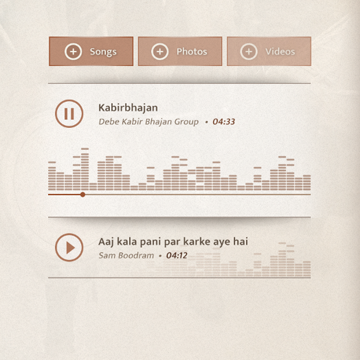
Bidesiya Nautanki & Songs
The Bihari migration is expressed through the traditional folk genre known as Bidesiya.
With its deeply emotional style, Bidesiya focuses on themes of separation, longing, and migration, often depicting the pain of leaving one’s homeland for better opportunities.


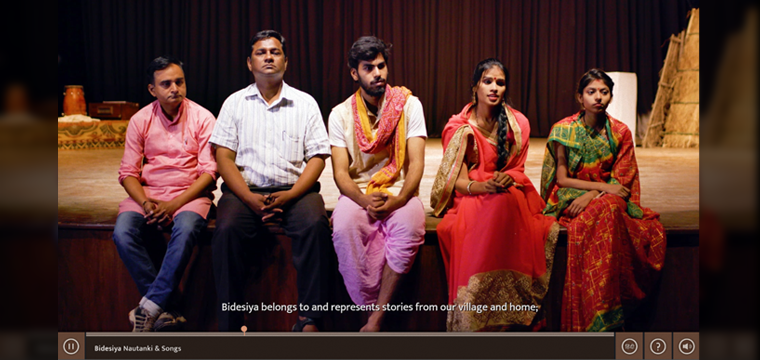
The genre was popularised by Bikhari Thakur, a literary figure who enriched Bihari culture through his theatre performances and songs.
Bihari Diaspora Today
This concluding exhibit provides an in-depth exploration of the Bihari diaspora, tracing its evolution from historical migrations to its present-day global influence.
Through a multitouch table and a projection wall, visitors can interact with both archival and contemporary data, uncovering the diverse experiences and contributions of Biharis around the world.
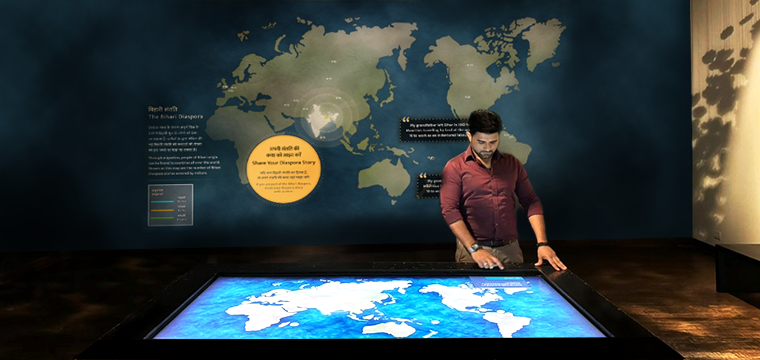

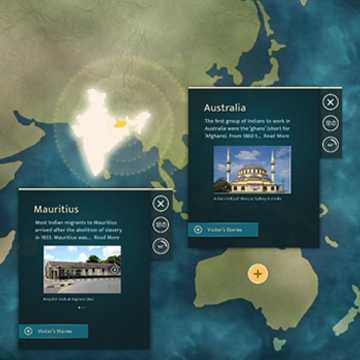
When visitors share their stories, the projection wall dynamically displays their contributions, creating a collective narrative that evolves in real-time.
This interactive feature enhances the visitor experience, making it personal, as their stories become part of the broader journey of the Bihari diaspora.
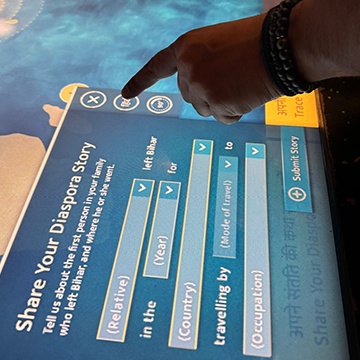

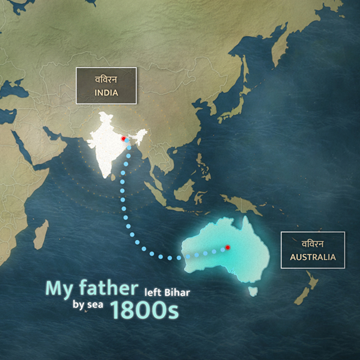
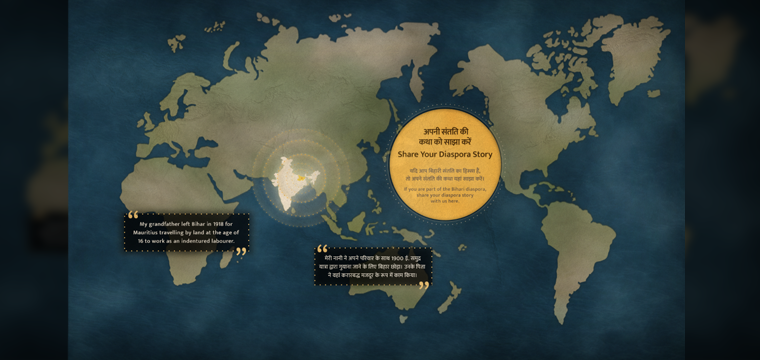
Project Information
Interpretive Design: Lord Cultural Resources
Design and Build: Cityneon
AVMM Creative Director: Tan Cher Suen, Tsuqi Hoh
AVMM Production: MMP Singapore
